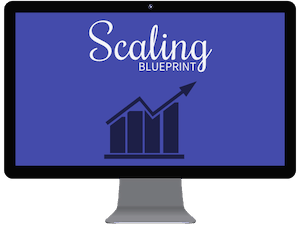If you’re really interested in scaling your business to the next level, then there’s a unique business strategy you should consider. This strategy became popular starting in 1990 and it’s called business process reengineering.
Business process reengineering (BPR) is a concept coined in 1990 by Michael Hammer in a Harvard Business Review article that examines and redesigns the main business processes and workflows in your business. The premise is that work should instead be based on end-to-end processes that provide value for customers.
It’s been used successfully in businesses like Ford, Mutual Benefit Life, IBM, General Electric, Sony, Hallmark, and many more.
This strategy can improve the quality of your products and services and even reposition your business to compete strongly in your niche.
Whether you’re an entrepreneur or a blogger or you prefer to be known as an online business owner, using this strategy can bring about a huge difference in the way you do business, provided you have business processes you follow repeatedly.
In this guide, you’ll learn:
- What is business process reengineering?
- Business process reengineering principles
- Business process reengineering steps
- 5 reasons why you need business process reengineering
Ready to discover all you need to know about business process reengineering in addition to the reasons why you need it in your business?
Let’s dive in!

What is Business Process Reengineering?
In simple terms, business process reengineering is a strategy that’s used to overhaul key business processes from the ground up.
It became well known in the business world when Michael Hammer, an engineer and computer science professor, published an article in 1990 in Harvard Business Review titled Reengineering Work: Don’t Automate, Obliterate
In that article, Hammer argued that instead of basing work on labor specialization and multiple levels and layers of management, work should instead be based on end-to-end processes that provide value for customers.
That means instead of just tweaking a part of a process or making small changes to an existing process, business process reengineering usually brings about a radical redesign that may or may not involve the use of technology.
It introduces a fundamental change in the business environment by simplifying existing processes and eliminating irrelevant ones, so you end up with an efficient and effective process that boosts productivity in general.
To help you understand BPR better, let’s take a closer look at an example of a business process reengineering success story.
Business Process Reengineering Example
Because Ford, an American automobile company, was searching for a way to reduce their cost in the early nineties, they started looking closely at all their departments.
Guess what they discovered?
They noticed they have as high as five hundred employees in their accounts payable department while their competitor, Mazda, had only five employees in their own account payable.
This got them thinking so they took another look at their process, which looked like this:
- Purchasing department raises a purchasing order for goods and a copy is sent to accounts payable
- Once the goods arrive, material control receives them and also sends a copy of their document to accounts payable
- The vendor that supplied the goods also sends an invoice for the goods delivered to accounts payable
- In the accounts payable department, a clerk now carries out a thorough check to confirm that the 3 documents match before issuing the payment
They also found that a lot of errors and discrepancies are usually discovered during this manual process.
And when such discoveries are made, the account payable clerk has no choice but to hold up the whole process and delay payment to carry out further investigations.
Changes That Were Made
Armed with this new understanding of their process and the challenges that come with it, they decided to reengineer their business processes, which radically changed their process to:
- Purchase orders from the purchasing department are fed into an online database
- Material control receives the goods and simply check the database to confirm that the goods match an outstanding purchase order
- Once there’s a match, material control confirms and accepts on the computer system
- Next, the computer then prepares a cheque automatically and this is sent to the vendor by the accounts department
In essence, business process reengineering helped Ford to:
- Simplify and speed up the process of matching purchase orders with goods received
- Eliminate invoices completely
- Reduce the number of people working in its accounts payable department by 75%
- Improve their relationship with vendors
Imagine having results like that in your business!
Business Process Reengineering Principles
To gain a better understanding of business process reengineering, you also need to know the principles guiding it.
Here they are:
- Organize around results, instead of tasks
- Process output users should work on the process
- Use scattered resources as if they’re centralized
- Combine parallel functions, not just their results
- Let people who produce information process it
- Build controlled processes
- Record information only once
Let’s explore these topics with a little more detail!
1. Organize Around Results, Instead of Tasks
This principle advocates that one person should perform all the steps in a process to shift the focus away from the task and move it to the end result of the process.
And if, throughout the steps in a task, the knowledge to complete the task crosses departments, then the task is switched to someone else who can perform the task best.
But, limit the task to one person per department.
2. Process Output Users Should Work on the Process
Before I lose you, a process output user is simply someone that uses what is produced from a process.
Example: a process produces a Pinterest graphic and a VA uploads that to Pinterest.
Because those that use the output of a process are usually not far from the process, and in most cases, also have a very good understanding of the process, this principle recommends that they should be allowed to carry out the process.
In the example above, those two people are the only ones that should be involved in the process.
This can go a long way to drastically reduce overhead and management cost.
3. Use Scattered Resources as if They’re Centralized
Even though you may have solid arguments for or against both centralization and decentralization, this principle suggests that resources that can be found in different locations or departments should be used as if they are centralized.
This way, you can enjoy some benefits of centralization and at the same time, enjoy the flexibility of using resources that are available in different places.
4. Combine Parallel Functions, Not Just Their Results
In cases where separate departments carry out the same function or separate units perform different activities that must be merged at the end, this principle submits that all the different functions should be combined together, instead of just combining results.
By so doing, they can be monitored and tweaked while still in process rather than when completed to catch errors, miscalculations, and defects early and significantly reduce waste.
An example would be one graphic designer creating images for the entire company, instead of each department creating their own for their functions.
5. Let People Who Produce Information Process It
You can see this principle in action in the Ford example discussed earlier, where material control creates information that’s sent to accounts payable initially.
After business process reengineering, material control not only produces information, but they also process it by checking the database to match goods received with an existing purchase order, making the whole process easier and faster.
Did I lose you? The key is to simplify the process and reduce the number of people involved 🙂
6. Build Controlled Processes
This principle suggests that people doing the work should be empowered to monitor the work, make decisions, and manage themselves, instead of having many layers of supervision.
To make this happen, all you have to do is build control into processes and use technology where necessary.
Don’t be surprised if the process becomes easier and faster without all those supervisors and managers.
7. Record Information Only Once
Sometimes, different units and departments collect the same information over and over again, but as far as this principle is concerned, information should be captured only once at the source.
Once captured, it should then be made available to everyone or every department that needs it, through the use of an online database or any other suitable technology.
Business Process Reengineering Steps
Now that you’re familiar with the principles, let’s move on to the steps you can take to successfully implement business process reengineering in your business.
Here are the steps:
- Decide and agree with your team
- Pick the right people for the project
- Identify existing processes that need reengineering
- Start with the most important processes
- Study and analyze the chosen processes
- Define success parameters for the new process
- Create a brand new process
- Test the new process
- Implement
Let’s explore these more in detail!
Step 1: Decide and Agree With Your Team
If you really want to successfully reengineer your processes (and you business as a whole), then you need the support and cooperation of all your team members.
Go out of your way to educate and convince them why you need to redo your processes and make sure you communicate all the benefits that each member of the team and the business as a whole, can expect.
Step 2: Pick the Right People for the Project
Assembling the right people to help you reengineer your business processes is critical.
To ensure success, it’s advisable to gather a team made up of at least:
- A Decision Maker: Someone who can act as a supervisor and ensure decisions and approvals required can be made and given quickly without wasting a lot of time going back and forth
- Relevant Professionals: Those whose expert/specialized contributions and skills are needed in different areas of the project (e.g. Finance, Information Technology, and so on)
- Process Owners: Those with a sound and thorough knowledge of the processes meant for reengineering, who should also have a lot of hands-on experience using those processes on a regular basis
In some cases, you may need to hire some of these people from outside your organization to get the right perspective.
Step 3: Identify Existing Processes That Need Reengineering
Before you can identify processes to be reengineered, you must, first of all, take a thorough look at all your existing business processes. While doing that, pick out those that you believe are lacking or falling short in one way or the other.
For instance, do you have inefficient processes that waste time and resources or that are so complicated that everyone generally tries to avoid using them?
Hint: you probably do 🙂
This is the time to bring out such processes and make a comprehensive list of them all.
Step 4: Start With the Most Important Processes
When evaluating which processes to reengineer, you should start with the most important ones or those that have implications in other areas.
A general rule of thumb is to start with the big processes and proceed into the smaller ones. By simplifying and solidifying those processes first, it will make reengineering easier later on as there’s a foundation to build upon.
Step 5: Study and Analyze the Chosen Processes
Having identified the processes to be reengineered, the next thing is to study and analyze them thoroughly, so you can pinpoint how and where they’re failing your business.
Try and figure out why they’re failing.
Here are a few common culprits:
- Ease of use
- Cost
- Speed
- Quality
To get this step right, you should be very open and receptive to feedback and contributions from all process stakeholders and at the same time, also seek the cooperation and contributions of process owners.
Make sure to communicate that their input will be valued.
Step 6: Define Success Parameters for the New Process
With all the relevant information and knowledge gathered in step 5, you can now define success parameters or key performance indicators (KPIs) for your reengineered processes.
Remember that these parameters should deliver a fundamental or drastic improvement that’s measurable and obvious to everyone.
For example, a KPI for a funnel selling a product might be the number of days it takes a subscriber to convert into a buyer.
Step 7: Create a Brand New Process
Using the success parameters identified in Step 6 above, you can now go ahead and create the new reengineered processes.
Step 8: Test the New Process
Before going ahead with full implementation, it’s always a good idea to test the new process on a small scale first, so you can catch any defects or errors that may have slipped by before now.
Testing will also give you an opportunity to confirm if the new process works and whether it meets all the success parameters identified earlier.
Step 9: Implement
Once all success parameters have been achieved during the test, then the only step remaining is the full implementation of the reengineered process.
But, just in case those parameters were not achieved, it’s best to go back to the drawing board and make needed adjustments and corrections before testing again.
So, that’s it!
You now know all the steps you can take to implement business process reengineering in your business successfully.
Next, let’s check out all the reasons why your business actually needs reengineering.
5 Reasons Why You Need Business Process Reengineering
Okay, let me take a wild guess.
With everything you’ve learned so far, you’re probably asking yourself if business process reengineering really applies to you.
After all, your business is not as big as Ford or IBM or any of the other big names mentioned earlier.
But you need to get this once and for all — it’s not about the size of the business or even the stage of your business.
As long as there are systems and processes being used repeatedly in a business, then that business can benefit from business process reengineering.
It helps you:
- Examine your business processes thoroughly
- Speed up your processing time
- Increase team productivity and performance
- Improve customer service quality
- Lower cost and boost profit
Let’s explore these powerful reasons with a little more detail!
1. Examine Your Business Processes Thoroughly
When was the last time you took a detailed look at how things are done in your business?
If you’re like most businesses, it’s possible your business processes have remained the same over the years, even as your business grows.
You probably only made token changes or tiny modifications here and there over time.
To carry out business process reengineering successfully, one major step that cannot be overlooked is a thorough study and analysis of your existing business processes.
This makes it possible for you to identify those processes that are still adding value, those that need to be scrapped, and those that are outdated, problematic, and/or cumbersome so they can be reengineered.
By doing so, you can reposition your business effectively and efficiently to attain greater revenue heights.
2. Speed Up Your Processing Time
Have you ever found yourself thinking some of your business processes may be too slow or maybe waste a lot of time?
Because business process reengineering helps you study and understand your business processes with great detail, it becomes easier to identify how some of these processes may be causing unnecessary delays and wasting valuable time.
Now, you can create new processes that eliminate all identified bottlenecks to deliver value to customers at a faster rate, thus improving your cycle or turnaround time.
Of course, this means you’ll be able to process more orders, attend to more customers, and most likely, increase your revenue.
3. Increase Team Productivity and Performance
Once your business processes become less cumbersome and start moving at a faster rate through reengineering, the people working on the processes will be positively affected.
Because their job has become less stressful, this boosts the morale of your team members and make them happier on the job.
According to research findings from the University of Warwick, happy employees were found to be 12% percent more productive because they usually work harder.
This simply means that your processes will be simpler and faster and that the productivity and performance of your team members will also go up significantly, which can boost your business’ bottom line.
4. Improve Customer Service Quality
Let’s face it, you cannot grow and scale your business to the next level without happy customers that rave regularly about your products and services.
To make that happen, you need high-quality customer service.
With business process reengineering, you can focus more on your customer needs and create processes that will help you attend to them quickly and efficiently.
Because team members also benefit from using this improved process, they will be happy and ready to go the extra mile, while attending to customers at every contact point, whether before, during, or after selling to the customer.
Don’t forget…
Only happy employees and team members can actually make your customers happy and by doing so, they help you reduce customer complaints, increase customer satisfaction, and attract more loyal customers to your business.
And of course, all these go a long way to raise the quality of your customer service and further boost your chances of growing and scaling your business to the next level, successfully.
5. Lower Cost and Boost Profit
So far, everything you’ve discovered about business process reengineering points to the fact that it can help avoid or drastically reduce costs in the following ways by:
- Avoiding wasting valuable time as a result of complicated and slow-moving business processes
- Making your processes more efficient and effective, which reduces errors and job repetitions that waste time, materials, and human effort
- Eliminating redundant business activities, processes, and people that add no value
By reducing all these wasted resources or even avoiding them totally, not only will you lower your business costs significantly, you’ll likely boost your profit at the end of the day.
Conclusion
Before we move on, here’s a quick reminder of everything we’ve covered in this guide:
- What is business process reengineering?
- Business process reengineering principles
- Business process reengineering steps
- Five reasons why you need business process reengineering
And there’s one more thing…
Whether you believe it or not, business process reengineering may be what you need right now to achieve the level of business growth you’ve been dreaming about for a long time.
So, why not go ahead and think about it?
If you have any questions or need clarity on a specific component, let us know in the comments below!




I found this very useful. It explain the term BPR and every bullet points were full explained.
I’m glad it made sense to you!